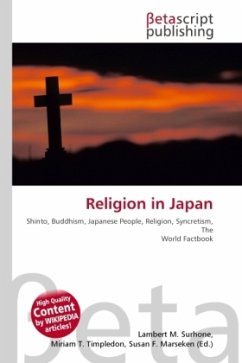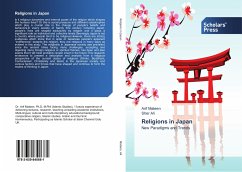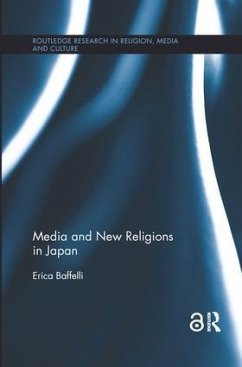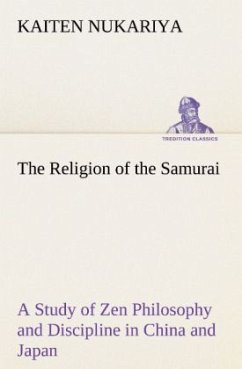
Religion in Japan
Versandkostenfrei!
Versandfertig in 6-10 Tagen
30,99 €
inkl. MwSt.

PAYBACK Punkte
15 °P sammeln!
High Quality Content by WIKIPEDIA articles! Here are many religions in Japan that have come along with current times but most follow Shint? or Buddhism. Most Japanese people do not identify as exclusively belonging to just one religion, but incorporate features of both religions into their daily lives in a process known as syncretism. Shinto and Buddhism are even taken to as being interwoven in the country. Japanese streets are decorated on Tanabata, Obon and Christmas. Japan grants religious freedom to all sects of religious people, as evidenced by the fact they allow minority religions like ...
High Quality Content by WIKIPEDIA articles! Here are many religions in Japan that have come along with current times but most follow Shint? or Buddhism. Most Japanese people do not identify as exclusively belonging to just one religion, but incorporate features of both religions into their daily lives in a process known as syncretism. Shinto and Buddhism are even taken to as being interwoven in the country. Japanese streets are decorated on Tanabata, Obon and Christmas. Japan grants religious freedom to all sects of religious people, as evidenced by the fact they allow minority religions like Christianity, Islam and Sikhism to be practiced. According to the CIA World Factbook 84% to 96% adhere to Shinto and Buddhism while 4% to 16% of the demographic population adhere to other religions or non-religious, atheist groups. However, such high numbers come primarily from birth records, following a longstanding practice of family lines being officially associated with a local Buddhist temple and not the people truly following the religion. The majority of Japanese carry on the roles of one or more religious body, but do not consider themselves believers in one particular religion, but are syncretistic.












